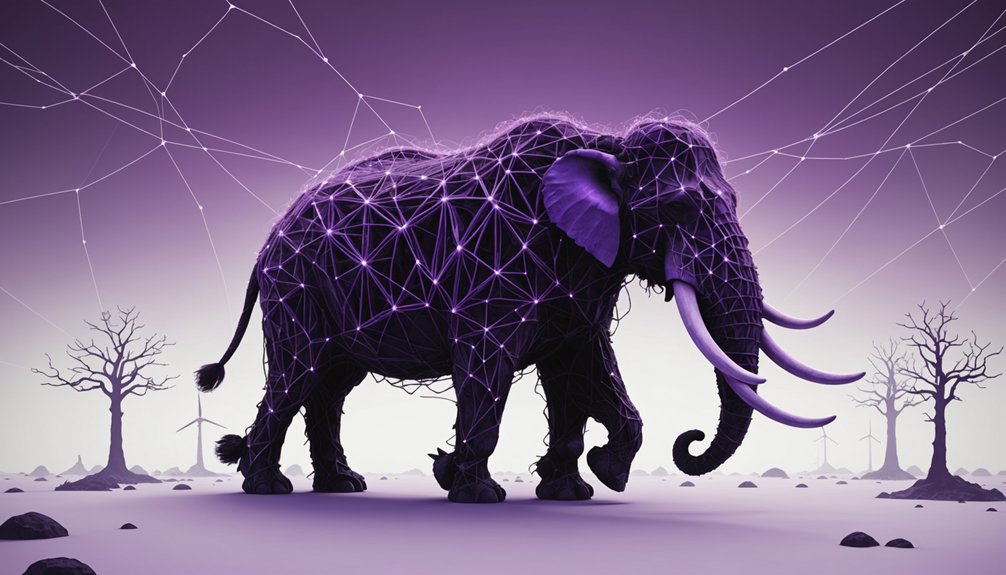Content distribution in 2025 will likely favor a multi-channel approach. Video platforms continue dominating, with TikTok evolving beyond trends into serious marketing. Owned media remains essential—podcasts for multitaskers, mobile apps for direct engagement. LinkedIn still rules B2B, while integrated tools like HubSpot streamline workflows. Paid distribution works best when targeted precisely, not shouting into the void. Native advertising delivers when it doesn’t scream “sponsored!” The landscape keeps shifting, but authenticity cuts through regardless of platform.

As digital landscapes evolve at breakneck speed, content distribution channels are becoming the make-or-break factor for marketing success. Brands can’t just create content anymore—they need to strategically place it where their audience actually hangs out. Shocking, right?
Owned media continues to form the backbone of content distribution. Blogs and websites serve as content hubs while email newsletters deliver targeted messages directly to interested parties. Mobile apps? Still relevant. And podcasts aren’t going anywhere—people love consuming content while multitasking. That’s just how humans operate now. Video content remains essential as over 100 million people watch videos daily.
Social media platforms remain non-negotiable. Facebook boasts massive reach despite being the platform everyone loves to hate. Instagram dominates visual storytelling, while LinkedIn rules the B2B space. TikTok has transcended its teen-dance-app reputation to become a serious marketing contender. A comprehensive approach requires balancing owned and paid platforms for truly effective promotion across channels. And Twitter? Still where real-time conversations happen, chaotic as it may be.
The tools professionals use matter tremendously. HubSpot integrates everything. Salesforce tracks customer relationships. Ahrefs handles SEO. Mailchimp delivers emails that people occasionally open. Hootsuite manages social posting. Tools like BillyBuzz offer Reddit conversation tracking at affordable price points. Data without tools is just noise.
Earned media still carries weight. Guest blogging builds authority. Press releases announce news nobody reads. Interviews establish expertise. User-generated content provides authenticity that branded content never will. Media partnerships extend reach exponentially. Email campaigns utilizing AI personalization are transforming how brands connect with audiences through predictive analytics and automated optimization.
Let’s not forget paid distribution. Google Ads target searchers. Facebook Ads reach specific demographics. LinkedIn Ads find professionals. Native advertising blends in. Sponsored content works when it’s not painfully obvious.
Data drives it all. Google Analytics tracks website performance. Ahrefs monitors SEO progress. SEMrush analyzes competitors. Sprout Social measures social impact. Mixpanel reveals user behavior patterns that are sometimes disturbing.
The smartest marketers integrate strategies across channels. They repurpose ruthlessly. They personalize without being creepy. They plan with content calendars. They measure results and pivot when necessary.
Because in 2025, adaptability isn’t just nice—it’s survival.
Frequently Asked Questions
How Much Should I Budget for Content Distribution?
Content distribution budgets vary wildly.
Companies typically allocate funds based on channel effectiveness and audience targeting. Social media costs fluctuate between platforms—Facebook isn’t TikTok. Email marketing gets pricier with segmentation tools. Video hosting? YouTube’s free, but Vimeo starts at $12/month.
And don’t forget influencers—they’ll charge based on reach. No magic number exists. Some businesses spend 10% of marketing budgets on distribution, others 40%.
Industry, goals, and scale matter. A lot.
Can Small Businesses Compete With Larger Companies on These Channels?
Small businesses absolutely can compete with the big guys. Their advantages? Agility and authenticity. They move fast. No red tape.
While corporate giants navigate bureaucracy, small businesses pivot overnight. Their content feels real—not manufactured by committee.
They win through smart targeting, not massive budgets. Niche expertise matters. Micro-influencers deliver better ROI than celebrities.
The digital playing field has leveled. A viral TikTok from a small shop can outperform a million-dollar campaign.
Size isn’t everything. Strategy is.
What Metrics Best Measure Content Distribution Success?
Success metrics for content distribution? It’s all about engagement.
Likes, shares, comments—they tell you if people actually care. Conversion rates show if your content makes money. Duh.
Bounce rates reveal if your stuff’s any good. People leaving in five seconds? Not great.
Reach and impressions? Nice ego boost, but hollow without action.
ROI remains king. Because what’s the point of viral content if it doesn’t pay the bills?
How Often Should Content Distribution Strategies Be Revised?
Organizations should revise their content distribution strategies quarterly at minimum. That’s not optional in today’s landscape.
Monthly reviews of performance metrics help catch problems before they become disasters. Some companies do weekly pulse checks. Smart ones, anyway.
Market trends shift fast. Competitors adapt. Audiences change their habits overnight.
Annual reviews? Way too slow. The digital world waits for no one.
Constant monitoring and regular adaptation are absolutely essential for survival, let alone success.
Are There Emerging Channels Not yet Mainstream Worth Watching?
Several under-the-radar channels deserve attention heading into 2025.
Decentralized social platforms like Mastodon are gaining traction.
Voice-first platforms utilizing smart speakers show promise.
Niche community platforms catering to specific interests—think Peloton’s community features—are exploding.
Digital out-of-home advertising is evolving with interactive elements.
And let’s not forget gaming platforms.
Fortnite isn’t just for teenagers anymore; it’s becoming a legitimate marketing channel.
The mainstream hasn’t caught up yet. They will.




